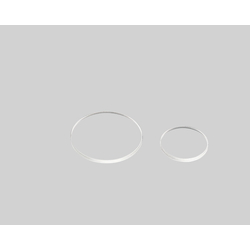Polarizers
| Shipping Days |
|
|---|
?* Information on days to ship and prices
-

Wave Plate
SURUGA SEIKI
A multi-order wave plate structured from a birefringence polymer sandwiched between two glass substrates. Ideal for basic polarized light experiments and experiments that do not require high levels of precision.
[Features]
· Ideal for basic polarized light experiments and experiments that do not require high levels of precision as they are more affordable than quartz crystal wave plates.
· The birefringence of a wave plate varies depending on the wavelength of the light. Its phase contrastalso changes.
· Therefore, there are some cases where the wavelength plate will not be effective in wavelengths other than the wavelength to be used.
· An anti-reflection film for the wavelengths used has been applied on the front and the back surfaces of the wave plate.
· Do not use in high temperature environments or with high energy lasers.
· The phase contrastmay change due to changes in temperature.Configure nowStarting from∗ : 342.05 € Min. Shipping Days : 7 Days *Unit price with basic configuration
-

Polarizing Plate
SURUGA SEIKI
[Features]
· A polarizing plate is a polarizer that can obtain linearly polarized light by making use of the dichroism of polymers.
· Structured with a polarizing film sandwiched by transparent plastic sheets.
· The extinction ratio is lower in comparison to polarizers (Glan-Thompson, etc.) which make use of birefringence and they are not adequate for high precision measurements. However, they are extremely useful for simple optical experiments from the perspective of them offering excellent affordability.
· The element does not contain a mark to indicate the transmission axis.- Volume Discount
Configure nowStarting from∗ : 41.52 € Min. Shipping Days : 7 Days *Unit price with basic configuration
| Brand |
|---|
| Product Series |
| Starting from∗ |
| Min. Shipping Days |
| Brand | SURUGA SEIKI | SURUGA SEIKI |
|---|---|---|
| Product Series | ||
| Starting from∗ | 342.05 € *Unit price with basic configuration | 41.52 € *Unit price with basic configuration Volume Discount |
| Min. Shipping Days | 7 Days | 7 Days |
Loading...
Filter by:
Brand
CAD data type
-
- 2D
- 3D










